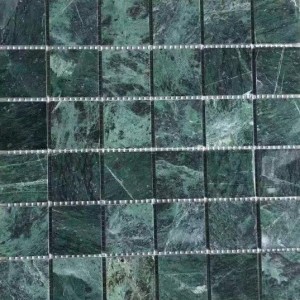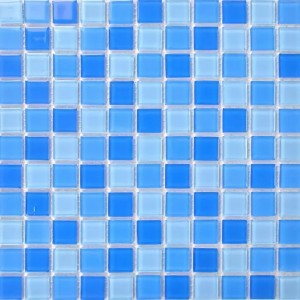Natural stone mosaic tile and ceramic mosaic tile are both popular choices for adding beauty and functionality to various spaces. While they share similarities in terms of appearance and versatility, there are some fundamental differences between the two. In this article, we will delve into the characteristics, benefits, and distinctions of natural stone mosaic tiles and ceramic mosaic tiles.
Natural stone mosaic tile is derived from various types of natural stones, such as marble, travertine, and limestone. These stones are extracted from the earth's crust and then cut into smaller, individual pieces to create mosaic tiles. On the other hand, ceramic mosaic tile is made from clay that is molded and fired at high temperatures, often with glazes or pigments added for color and design.
One of the notable differences between natural stone mosaic tile and ceramic mosaic tile lies in their visual appeal. Natural stone tiles offer a unique, organic beauty with their natural variations in color, patterns, and textures. Each stone has its distinct characteristics, and as a result, no two natural stone tiles are exactly alike. This inherent uniqueness adds a touch of luxury and elegance to any space. Ceramic mosaic tiles, on the other hand, can mimic the appearance of natural stone but lack the inherent variations and organic feel. They are available in a wide range of colors, patterns, and designs, making them a versatile choice for various design styles.
Durability is another key aspect where natural stone mosaic and ceramic mosaic tiles differ. Natural stone tiles are known for their exceptional strength and durability, capable of withstanding heavy foot traffic and other physical stresses. Ceramic tiles, while durable in their own right, are generally not as robust as natural stone tiles. They may be prone to chipping or cracking under heavy impact.
Maintenance requirements also set natural stone and ceramic mosaic tiles apart. Natural stone tiles are porous materials, meaning they have tiny interconnected pores that can absorb liquids and stains if left untreated. To prevent this, they usually require regular sealing to protect against moisture, stains, and other potential damage. Ceramic tiles, on the contrary, are non-porous and do not require sealing. They are relatively easier to clean and maintain, as they are resistant to stains and moisture.
In terms of applications, both natural stone and ceramic mosaic tiles can be used in various areas of a home or commercial space. Natural stone mosaic tiles are often favored for creating a luxurious and sophisticated atmosphere in areas such as bathrooms, kitchens, and living spaces. They can also be utilized outdoors for patios, walkways, and pool areas. Ceramic tiles, due to their versatility, are commonly used in kitchens, bathrooms, and other high-moisture areas. They are also popular for decorative purposes, such as backsplashes, accent walls, and artistic designs.
Cost is an important consideration when choosing between natural stone and ceramic mosaic tiles. Natural stone tiles, like natural marble mosaics, tend to be more expensive than ceramic tiles due to the cost of extraction, processing, and the natural variations they possess. The price can vary depending on the type of stone chosen. Ceramic tiles, on the other hand, are generally more affordable and offer a cost-effective solution without compromising on aesthetics.
In summary, natural stone mosaic tile and ceramic mosaic tile have distinct characteristics that set them apart. Natural stone tiles offer a unique, organic beauty with variations in color and texture, while ceramic tiles provide versatility in terms of design options. Natural stone is highly durable but requires more maintenance, while ceramic tiles are easier to clean and maintain. The choice between the two ultimately depends on personal preferences, budget, and the specific requirements of the space in question.
Post time: Sep-01-2023




